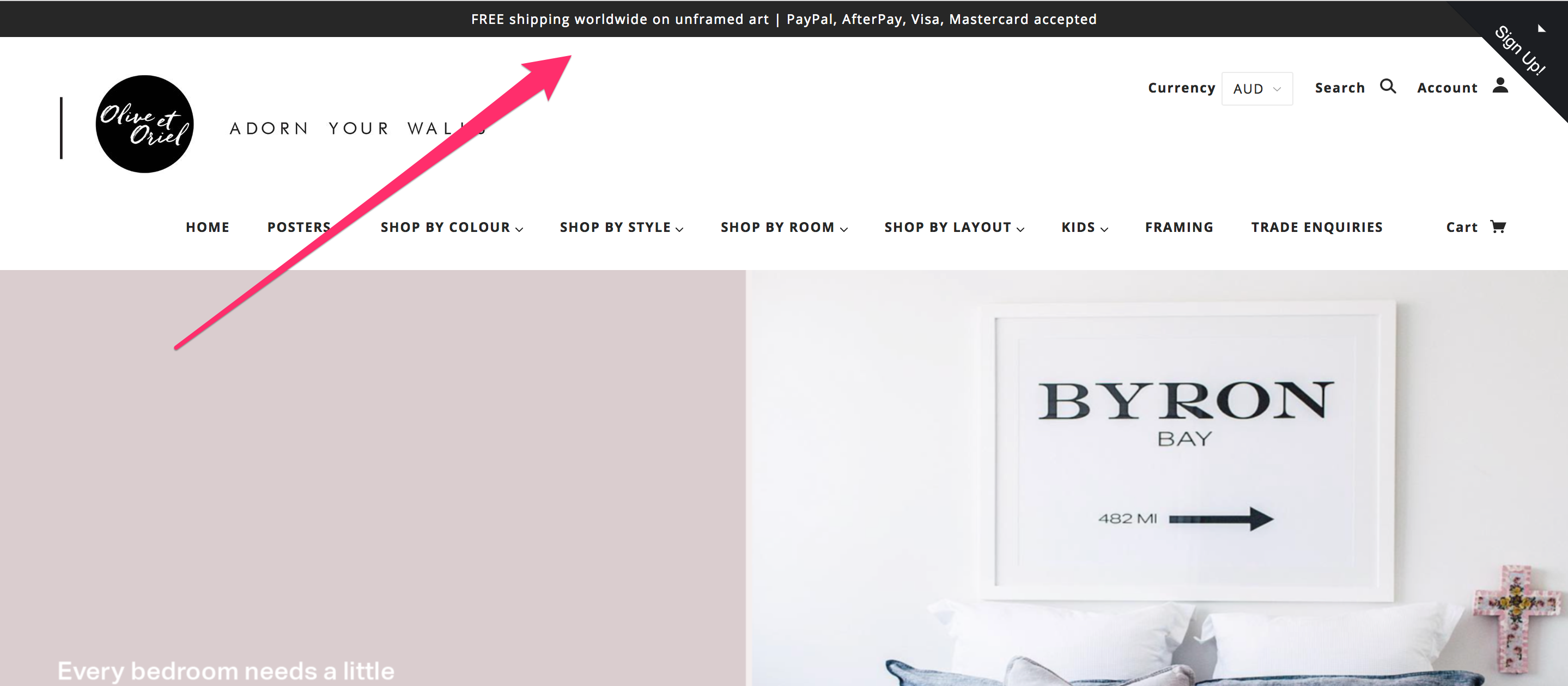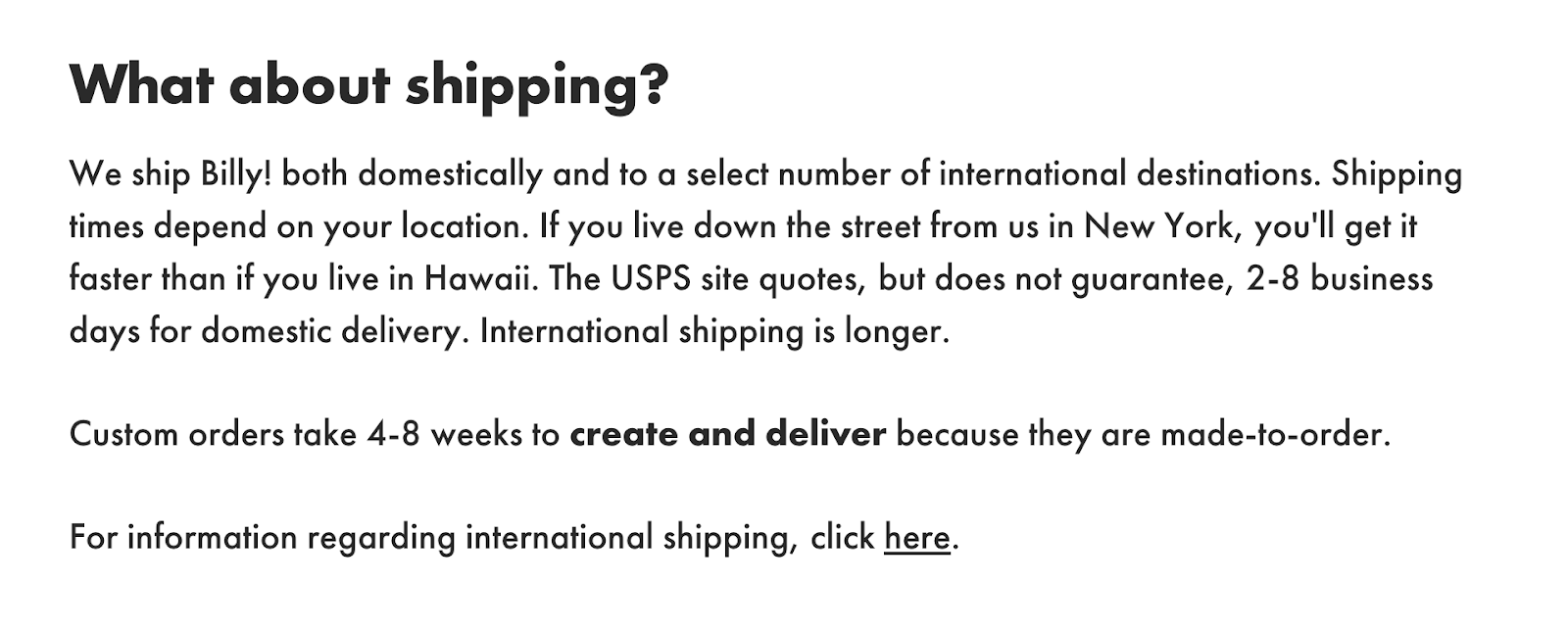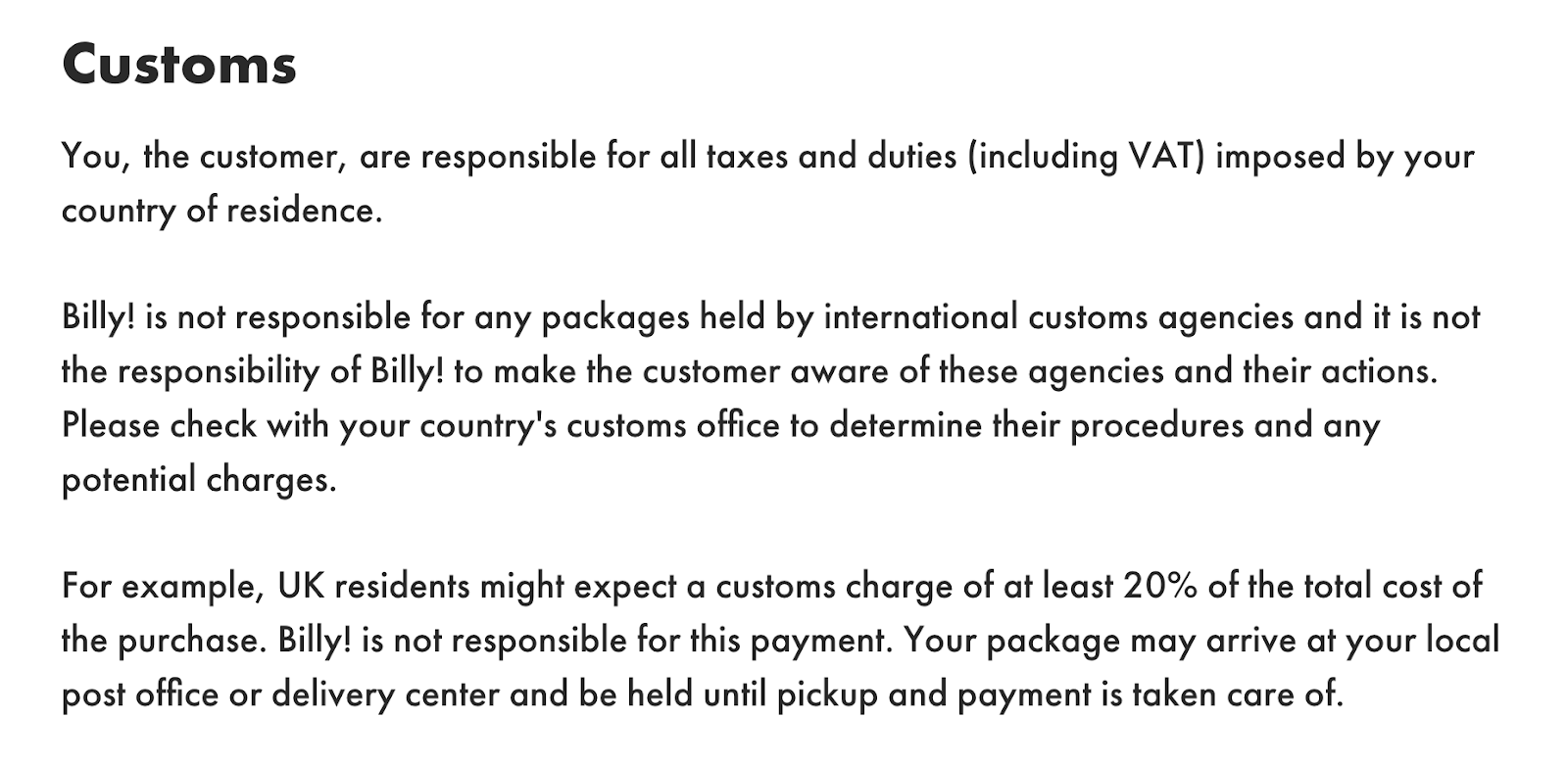International shipping is a key part of building a global business.
But sometimes, the logistics involved are more complex for certain product categories, or they render shipping far too expensive. For other products, international shipping might be a relatively simple, straightforward process, which makes expanding into new markets much more appealing—but only with that subset of your store’s items.
Once you’ve got that figured out for your business, how do you communicate it to your customers, and avoid disappointing them when they go to check out only to realize their chosen products aren’t available in their area? That’s what we’re tackling today on Ask Shopify.
Question:
After looking at the available options for shipping and fulfillment, and how much it costs for each of my products, I've decided to only offer international shipping on some products. I'm worried that this will be confusing for customers while they're shopping—should I limit my shipping policy to just domestic, even though I'm happy to ship some of my items internationally? If I do decide to offer different options, how do I make sure people understand and aren't disappointed when they get to their cart?
Answer:
First of all, figuring out an international shipping strategy and analyzing your products to determine which ones make sense to ship everywhere and which ones don’t is an important step, so kudos for tackling that.
You’re right to think about customer communications, because a clear, well-communicated shipping policy can help you convert more sales and see fewer abandoned carts. By clearly setting expectations, you’re reducing unexpected surprises in the checkout process, and that’s good for everyone.
Luckily, you don’t have to limit your shipping options just for the sake of clarity. If you’re ready to start shipping some products internationally, there are ways to make that clear to your customers and grow your business, even if other products need to stay domestic for the time being.
See our guide on epacket for exporting to China.
Use an information bar
The simplest answer is often the best one, and that’s true in this case. If some of your products only ship to certain countries, and others are available to ship worldwide, you can make a note of that in a banner at the top of your store, just as you would to communicate other key shipping information like the minimum order size for free shipping. Take a look at how Olive et Oriel makes it work.

As soon as you visit their store, you know that if you’re ordering unframed art, you don’t need to worry—they’ll ship it to you for free, no matter where you are in the world. Their simple, clear phrasing makes things very easy for their customers.
Highlight shipping on your product pages
But even a top banner that persists across your store might not get all the relevant details across, or communicate your policy effectively if it changes on a product-by-product basis. In those cases, and to complement a top bar if you have one, you can make a note of exceptions and other important details on your product pages.
Olive et Oriel does exactly that by reminding shoppers that a product is available worldwide on relevant product pages, and elaborating on the shipping availability for products that aren’t.

Even though their posters are available with free shipping worldwide, they still take the opportunity to link to their detailed shipping policy for additional information.

Beyond clarifying their shipping policy, they’ve also noted when a customer should reach out to them before placing an order. This helps to set expectations regardless of what the process is and what’s available.
Link to your full shipping policy
No matter where else you share your product’s shipping information, it’s always important to have a current, comprehensive shipping policy page available for your customers. This can help augment both of the previous options as well, since linking to your full policy can help you offer quick, concise overviews while providing more detailed shipping policy information if customers need it.
Billy! is a great example of this. They include a note about international shipping in their FAQ, and a link to more information for customers who want it.

When you visit Billy!’s international shipping page, you’ll find a list of their shipping destinations, as well as notes on the other information that international customers need to know before they place an order—like customs.

If you’re concerned that customers will have additional, specific questions about their international orders, a separate shipping policy page just for those details is a great way to make sure everything is clear.
Monitor metrics and feedback
Once you’ve got your policies clearly communicated, it’s time to track how they’re performing. While there may not be a metric that can tell you exactly how many potential customers left without buying because of shipping availability, there are two ways you can approximate that metric.
- Abandoned carts. Your overall abandoned cart metric is always important to keep an eye on. But after switching up your shipping policy, it’s a good time to see if the metric moves in either direction. There are always going to be some shoppers who don’t complete their carts, but watching how this metric responds to changes is one way to gauge their effectiveness.
- Customer feedback. Whether it’s on social media, by email, or through your live chat, keep an eye on how many customers mention the availability of your products by geography—and how many are surprised by it. This is a much more qualitative signal, but monitoring whether your customers are struggling to understand which products are available to them is another lens through which you can evaluate your shipping communications.
International shipping: Some is better than none
If it makes the most sense for you to offer international shipping on some items and not others, don’t let your communication strategy stand in the way of expanding beyond your borders with just those items. With a few tweaks to your shipping policy, as well as clear communication throughout your store, you can take your first steps toward growing globally and sharing your products with the world.
International shipping policy FAQ
What are the requirements for international shipping?
- Commercial invoice
- Pro forma invoice
- Packing list
- Certificate of origin
- Bill of lading
- Air waybill
- Export license
- Export control documents
- Letter of credit
- Insurance documents
- Export declaration
- Dangerous goods declaration
- Harmonized system (HS) codes
- Certificate of conformity
- Customs clearance documents
What are the shipping policies?
How does international shipping process work?
What are the most made mistakes in international shipping?
- Failing to properly classify goods: Incorrectly classifying goods can lead to delays in shipment, additional costs, and liability for penalties.
- Not being familiar with local laws and customs: Knowing what goods and services are allowed in different countries is essential in order to avoid delays and penalties.
- Not verifying shipping information: Incorrect or incomplete shipping information can lead to delays or even the loss of goods.
- Underestimating costs: The cost of international shipping can vary depending on the destination and size of the shipment, so it’s important to research and calculate all costs beforehand.
- Not having the right documents: Customs authorities require certain documents for international shipments, so it’s important to have everything in order.
- Not considering packing requirements: Packaging requirements vary from country to country, so it’s important to research and prepare accordingly.
- Not considering insurance: Accidents, theft and other unforeseen events can occur during international shipping, so it’s important to have the right insurance coverage.
Topics:
Join 446,005 entrepreneurs who already have a head start.
Get free online marketing tips and resources delivered directly to your inbox.
Thanks for subscribing
You’ll start receiving free tips and resources soon. In the meantime, start building your store with a free 14-day trial of Shopify.





